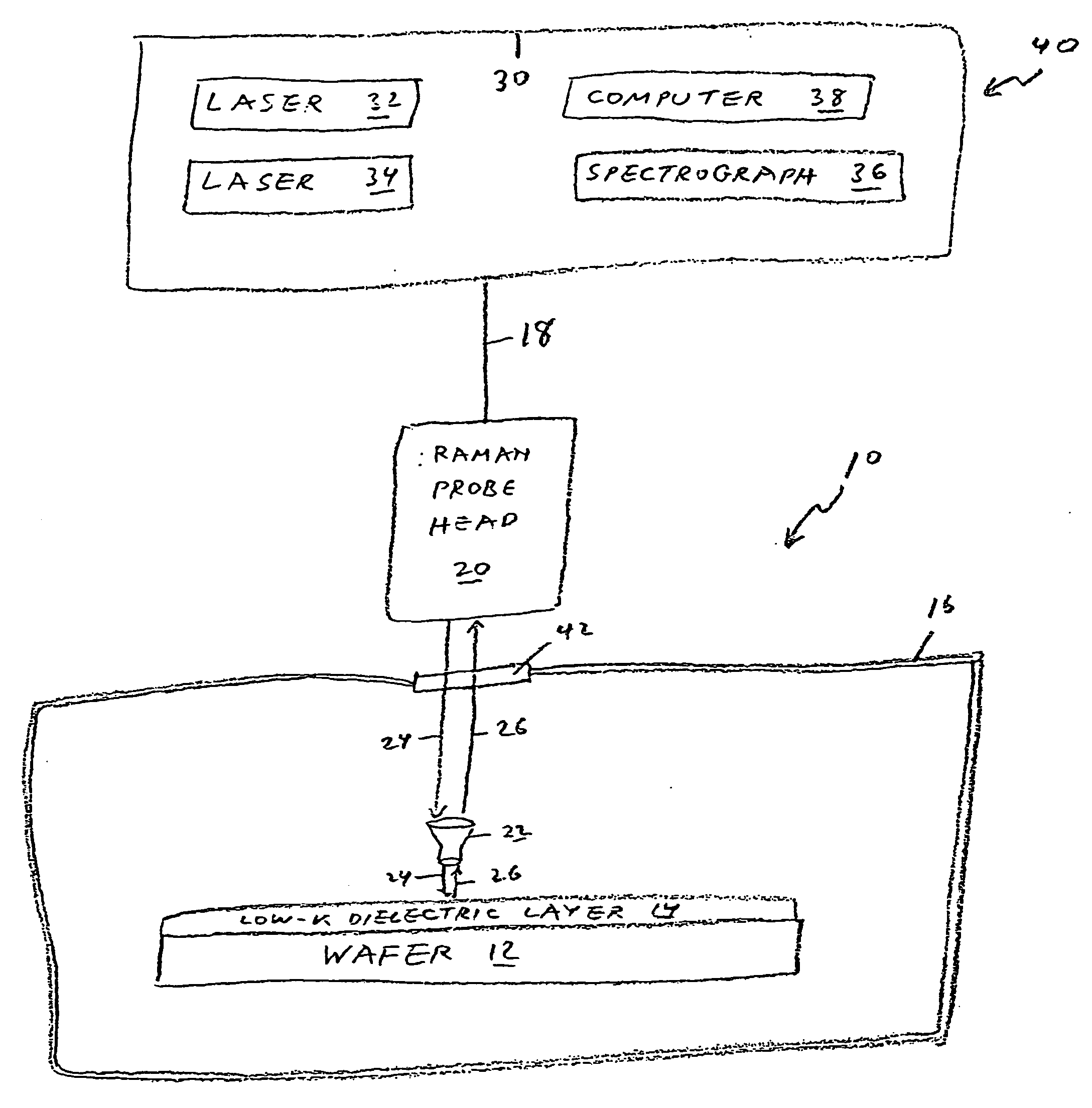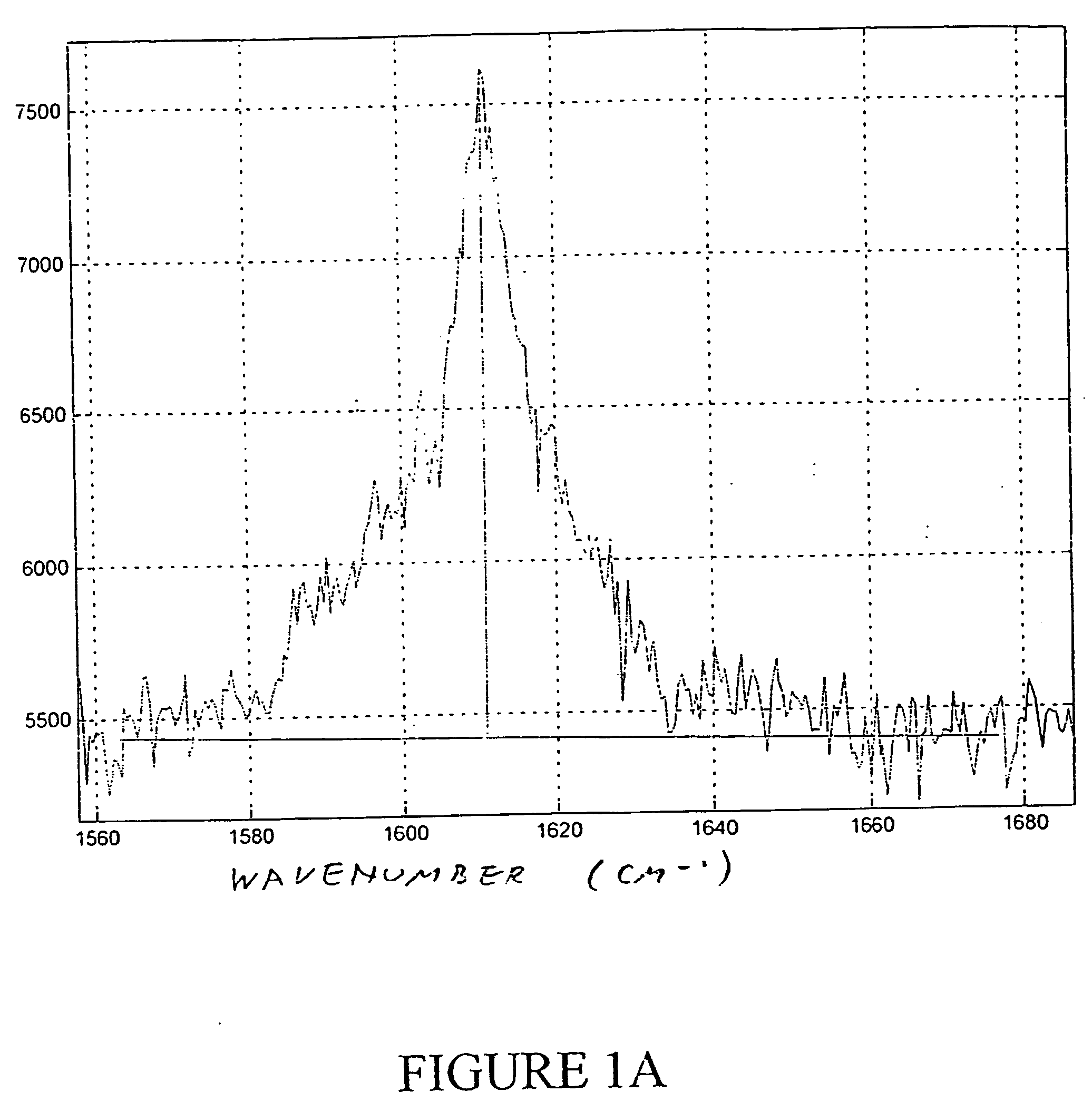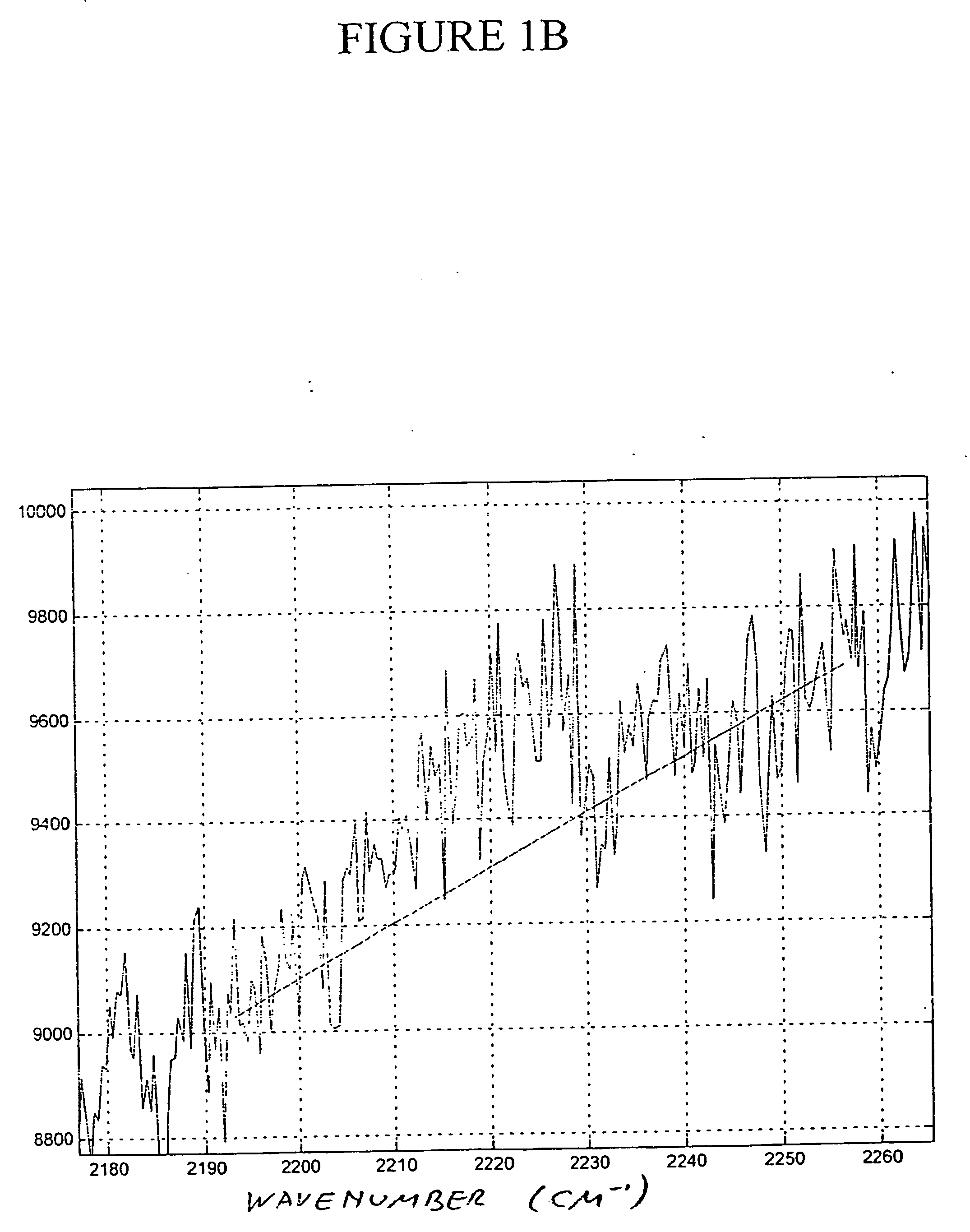In-line spectroscopy for process monitoring
a technology of in-line spectroscopy and process monitoring, which is applied in the direction of fluorescence/phosphorescence, optical radiation measurement, instruments, etc., can solve the problems of high wafer cost, high overall density, and damage to the intended function of these dielectrics
- Summary
- Abstract
- Description
- Claims
- Application Information
AI Technical Summary
Benefits of technology
Problems solved by technology
Method used
Image
Examples
Embodiment Construction
The present invention is of a method of processing a workpiece, while monitoring the processing using an optical excitation technique such as Raman scattering. The monitoring of the present invention may be simultaneous with or subsequent to the processing, in the same chamber or in a different chamber. Specifically, the present invention can be used to deposit and anneal or cure a layer of low-K dielectric on a semiconductor wafer.
The principles and operation of workpiece processing according to the present invention may be better understood with reference to the drawings and the accompanying description.
We have performed our own Raman spectral measurements of properties of interest in low-K dielectrics on silicon wafers. Referring now to the drawings, FIGS. 1A through 10 illustrate some of these measurements.
1. Curing of SiLK™
SiLK™ is a low-K dielectric material that is manufactured and sold by Dow Chemical Company of Midland Mich. USA. FIGS. 1A and 1B are portions of a Ram...
PUM
| Property | Measurement | Unit |
|---|---|---|
| feature sizes | aaaaa | aaaaa |
| feature sizes | aaaaa | aaaaa |
| wavenumbers | aaaaa | aaaaa |
Abstract
Description
Claims
Application Information
 Login to view more
Login to view more - R&D Engineer
- R&D Manager
- IP Professional
- Industry Leading Data Capabilities
- Powerful AI technology
- Patent DNA Extraction
Browse by: Latest US Patents, China's latest patents, Technical Efficacy Thesaurus, Application Domain, Technology Topic.
© 2024 PatSnap. All rights reserved.Legal|Privacy policy|Modern Slavery Act Transparency Statement|Sitemap



